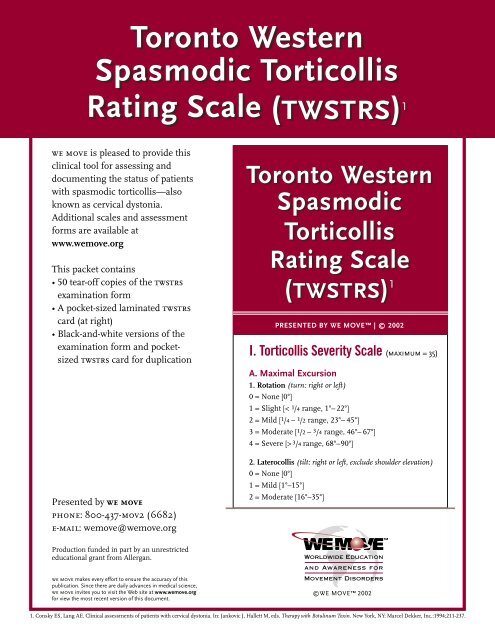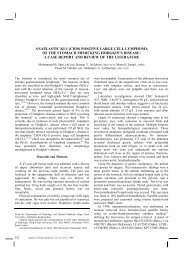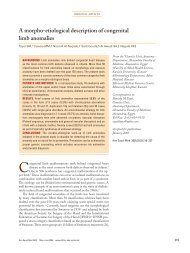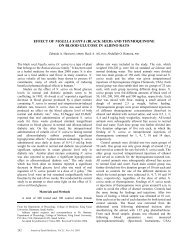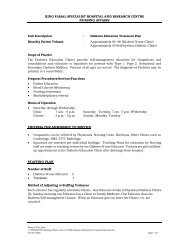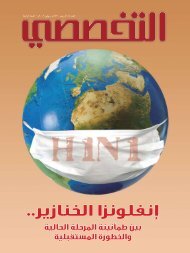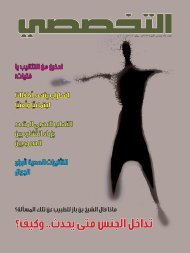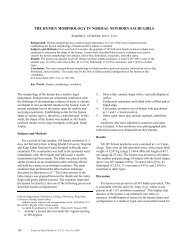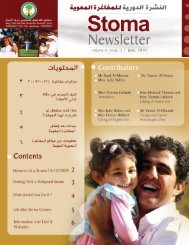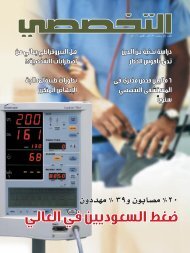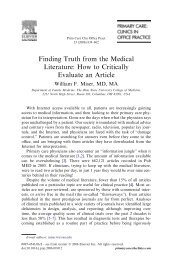Toronto Western Spasmodic Torticollis Rating Scale (TWSTRS)1 ...
Toronto Western Spasmodic Torticollis Rating Scale (TWSTRS)1 ...
Toronto Western Spasmodic Torticollis Rating Scale (TWSTRS)1 ...
- No tags were found...
You also want an ePaper? Increase the reach of your titles
YUMPU automatically turns print PDFs into web optimized ePapers that Google loves.
<strong>Toronto</strong> <strong>Western</strong><strong>Spasmodic</strong> <strong>Torticollis</strong><strong>Rating</strong> <strong>Scale</strong> (<strong>TWSTRS</strong>) 1we move is pleased to provide thisclinical tool for assessing anddocumenting the status of patientswith spasmodic torticollis—alsoknown as cervical dystonia.Additional scales and assessmentforms are available atwww.wemove.orgThis packet contains• 50 tear-off copies of the twstrsexamination form• A pocket-sized laminated twstrscard (at right)• Black-and-white versions of theexamination form and pocketsizedtwstrs card for duplicationPresented by we movephone: 800-437-mov2 (6682)e-mail: wemove@wemove.org<strong>Toronto</strong> <strong>Western</strong><strong>Spasmodic</strong><strong>Torticollis</strong><strong>Rating</strong> <strong>Scale</strong>(<strong>TWSTRS</strong>) 1PRESENTED BY WE MOVE | © 2002I. <strong>Torticollis</strong> Severity <strong>Scale</strong> (maximum = 35)A. Maximal Excursion1. Rotation (turn: right or left)0 = None [0°]1 = Slight [< 1 /4 range, 1°– 22°]2 = Mild [ 1 /4 – 1 /2 range, 23°– 45°]3 = Moderate [ 1 /2 – 3 /4 range, 46°– 67°]4 = Severe [>3/4 range, 68°–90°]2. Laterocollis (tilt: right or left, exclude shoulder elevation)0 = None [0°]1 = Mild [1°–15°]2 = Moderate [16°–35°]Production funded in part by an unrestrictededucational grant from Allergan.we move makes every effort to ensure the accuracy of thispublication. Since there are daily advances in medical science,we move invites you to visit the Web site at www.wemove.orgfor view the most recent version of this document.©WE MOVE 20021. Consky ES, Lang AE. Clinical assessments of patients with cervical dystonia. In: Jankovic J, Hallett M, eds. Therapy with Botulinum Toxin. New York, NY: Marcel Dekker, Inc.:1994;211-237.
<strong>TWSTRS</strong> Examination Record [to be completed by the examiner]PatientChart No.Date | | Time am pmmonth day year©WE MOVE 2002I. <strong>Torticollis</strong> Severity <strong>Scale</strong> (maximum = 35)A. Maximal ExcursionRate maximum amplitude of excursion asking patient not to oppose the abnormal movement; examiner may usedistracting or aggavating maneuvers. When degree of deviation is between scores, choose the higher of the two.1. Rotation 0 1 2 3 42. Laterocollis 0 1 2 33. Anterocollis or Retrocollisa. Anterocollis 0 1 2 3b. Retrocollis 0 1 2 34. Lateral shift 0 15. Sagittal shift 0 1B. Duration Factor 0 1 2 3 4 5(Weighted x 2) (x 2) (x 2) (x 2) (x 2) (x 2)C. Effect of Sensory Tricks 0 1 2D. Shoulder Elevation/Anterior Displacement 0 1 2 3E. Range of Motion 0 1 2 3 4F. Time 0 1 2 3 4SCOREII. Disability <strong>Scale</strong> (maximum = 30)A. Work 0 1 2 3 4 5B. Activities of Daily Living 0 1 2 3 4 5C. Driving 0 1 2 3 4 5D. Reading 0 1 2 3 4 5E. Television 0 1 2 3 4 5F. Activities Outside the Home 0 1 2 3 4 5III. Pain <strong>Scale</strong> (maximum = 20)SUBTOTAL SEVERITYSUBTOTAL DISABILITYA. Severity of Pain (worst + best + (2*usual))/4 Best ____ Worst ____ Usual ____B. Duration of Pain 0 1 2 3 4 5C. Disability Due to Pain 0 1 2 3 4 5injection record on reverse sideSUBTOTAL PAINphysician’s signatureTOTAL <strong>TWSTRS</strong> SCORE
Injection Record [indicate injection sites on diagrams provided]PatientChart No.Date | | Time am pmmonth day year©WE MOVE 2002Agent Injected: botox _____ Units/ml. Dysport _____ Units/ml. myobloc/Neurobloc _____ Units in _____ ml.Units Volume Number of Total TotalMuscle InjectedInjected Injected Injections Units VolumeTotal Amount Administered _____________ Total Amount Used _____________ Electromyography Utilized? Yes NoSemispinalis capitis m.Semispinalis capitis m.Splenius capitis m.Splenius capitis m.Sternocleidomastoid m.Spinal accessory nerveSpinal accessory nerveSternocleidomastoid m.<strong>Scale</strong>ne muscles:AnteriorMiddlePosteriorLevator scapulae m.Trapezius m.Brachial plexusLevator scapulae m.Trapezius m.Brachial plexus<strong>Scale</strong>ne muscles:AnteriorMiddlePosteriorm. = muscleSplenius capitis m.Levator scapulae m.Deltoid m.Trapezius m.Rhomboideus minor m.Rhomboideus major m.Supraspinatus m.Infraspinatus m.Teres major m.Semispinalis m.Trapezius m.Splenius capitis m.Sternocleidomastoid m.Splenius cervicalis m.Longissimus capitis m.Levator scapulae m.Rhomboid minor m.Rhomboid major m.Teres minor m.Latissimusdorsi m.Serratus anterior m.Serratus posteriorinferior m.Oblique internus m.Erector spinae m.physician’s signature<strong>Toronto</strong> <strong>Western</strong> <strong>Spasmodic</strong> <strong>Torticollis</strong> <strong>Rating</strong> <strong>Scale</strong> (twstrs)


